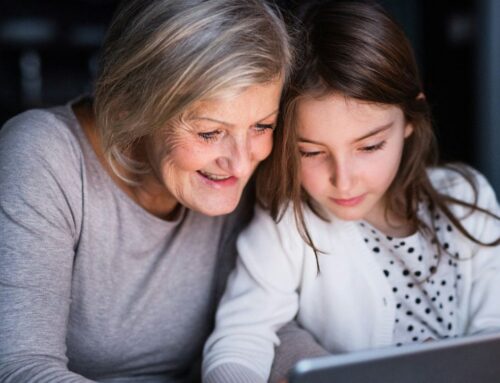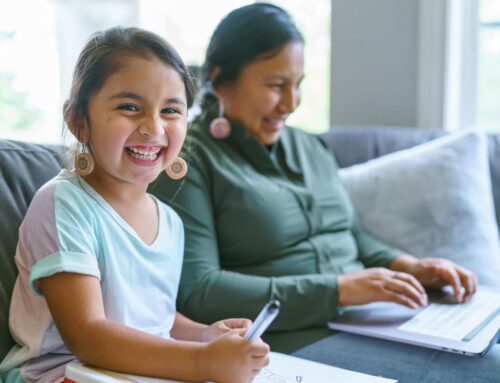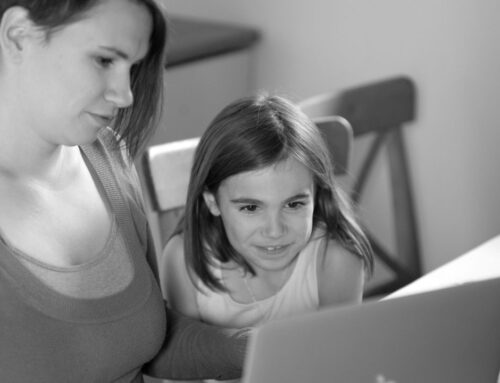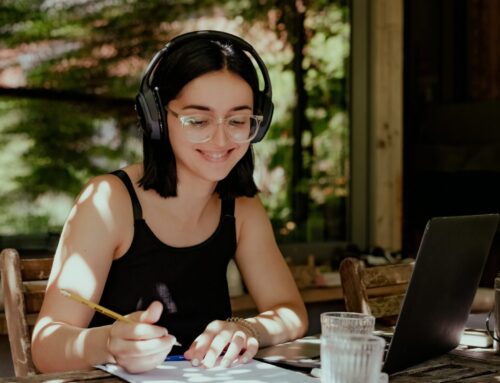SelfDesign’s philosophy is intricately woven through the fabric of its foundational quilt. It permeates every aspect of SelfDesign Learning Community’s inclusive kindergarten to grade 12 program. Our philosophy exists in the hearts of our leadership team, in every one of our 185 B.C. certified educators, and it is modeled for each of our learners.
SelfDesign Director of Organizational Learning and Culture River Meyer says, “The beauty of our philosophy is that it encourages each and every learner to develop and follow their own enthusiasms, trusting in their innate ability to learn from what we call a curriculum of life experiences. It supports them as designers of their own personalized learning journey.”
SelfDesign is an inclusive model, recognizing that all learners move through the phases of their lives in patterns unique to them, and within these phases they are supported to follow a learning path appropriate to their diverse abilities, learning styles, gender identity and expression, and personal or spiritual beliefs.
While each learner is seen as a unique individual with distinct gifts and needs, the foundation of the SelfDesign philosophy remains the same for all. It is shaped around three core elements:
Learning is a continuous and accumulating process rather than a product or set of outcomes.
Learners are positioned at the centre of their individualized learning path.
Learning and personal development occur within nurturing, relational environments.
Using these three core elements, SelfDesign employs practices and strategies that support lifelong engagement and learning.
“In the past, schooling was primarily based on outcomes and on the idea that outcomes demonstrate learning,” River says. “The traditional model discounted the fact that learning is happening all the time and that learning outcomes may simply be a type of end-product. In SelfDesign, we understand the value of things like projects, portfolios, or the completion of a chosen course, but we put our focus on the learning process itself.”
In a five or six-year-old, for example, you may start to see glimmers of a later behavior, skill or knowledge base. You may see this glimmer turn into a competency as the child matures.
“If you see a glimmer in the learner and are aware of it as an educator or parent, you can pay attention to it, breathe air into it or blow on it like a little flame, expanding its possibilities,” she explains. “It doesn’t mean the learner will necessarily choose to pick it up, but you’ve given them the opportunity. You are attending to where the learner is in that moment, as opposed to imposing an external agenda of expectation, and in relationship and conversation you can see where the learner will decide to go next.”
Meyer believes that the name SelfDesign can be misleading and can suggest an emphasis on self-involvement, when in reality the opposite is true. “One of the main ideas behind SelfDesign is putting each learner at the centre of their experience,” River says. “What I mean by that is that I am at the centre of my learning journey and my life, designing as I go, and you are at the centre of your learning journey and life. If we are each standing at the centre of our experience, it is the relational space between us where mutual learning, benefit, and harmony are created. The aim of the SelfDesign approach is toward an ongoing and deepening understanding of our inner being as it connects to and grows from our relationships with others and with our environment.”
Because we believe that knowledge is built in great part from relationship and conversation, we create positive and nurturing learning environments that foster collaboration and mutual respect, as well as the development of self-agency.
With emphasis placed on expanding strengths rather than correcting perceived deficiencies or differences, positive self-perception develops that strengthens the learner’s motivation to explore their learning world. Through weekly connection, focus is placed on gradually bringing forward the learner’s voice, holding them at the centre of their learning while building their confidence.
SelfDesign’s model, based as it is in supporting the learner as the designer, sets forth a unique relationship between educators and families.
“Our B.C. certified educators are there as guides, consulting to the learning and pointing toward possible paths or resources rather than imparting a one-size-fits-all curriculum,” River says. “The educator helps build trust in this unique approach, and parents, whom we hold as experts on knowing their children, are supported to act as advocates for their children’s daily activities and goals, observing the process as it unfolds.”
In this way, the core elements of SelfDesign weave their way through our entire program and help develop learners who bring essential competencies and a joy for lifelong learning to twenty-first century living.







